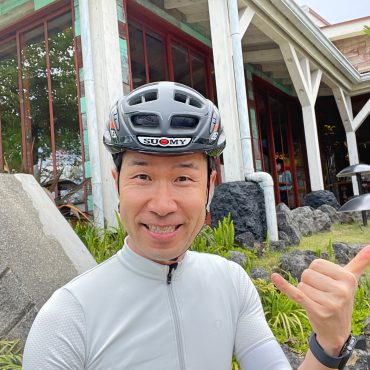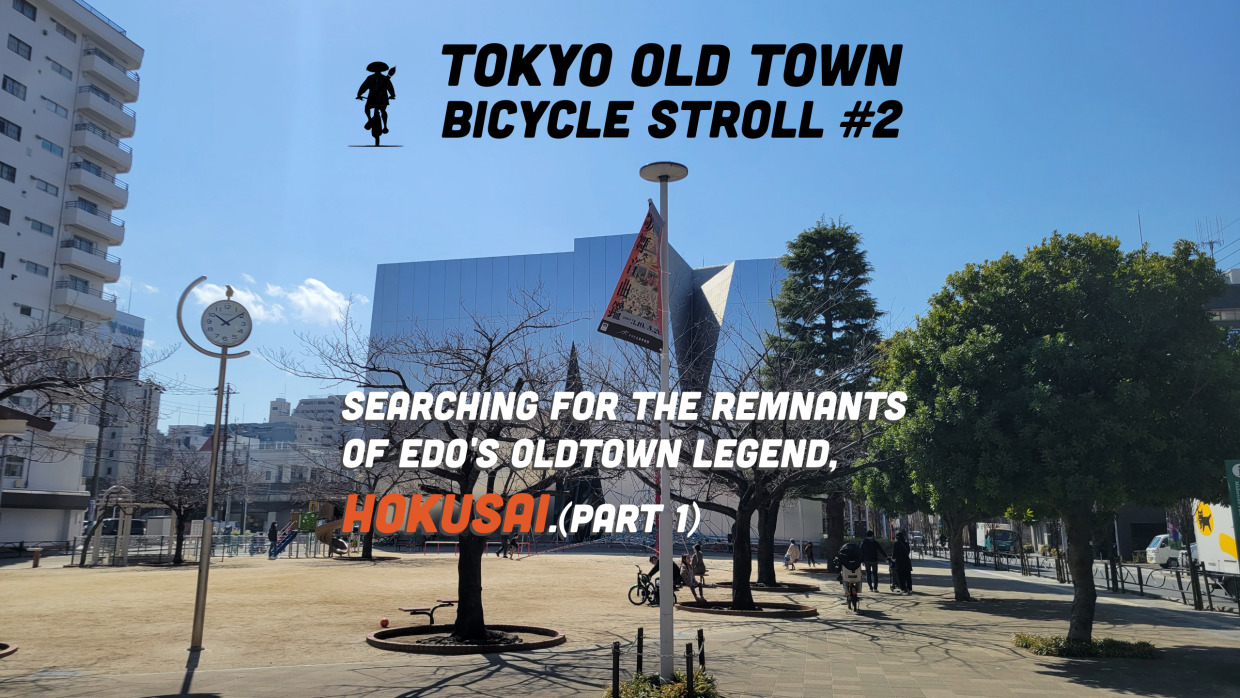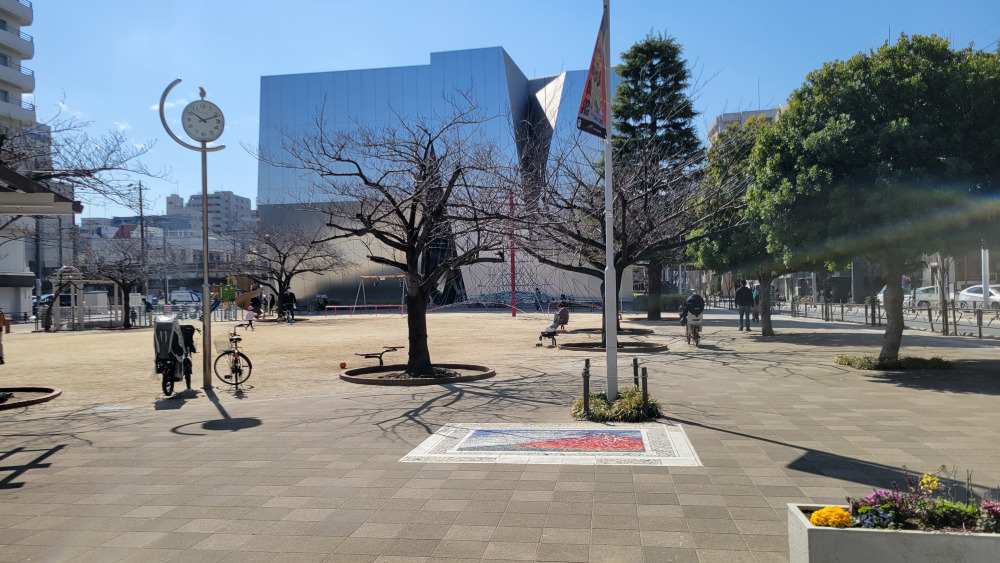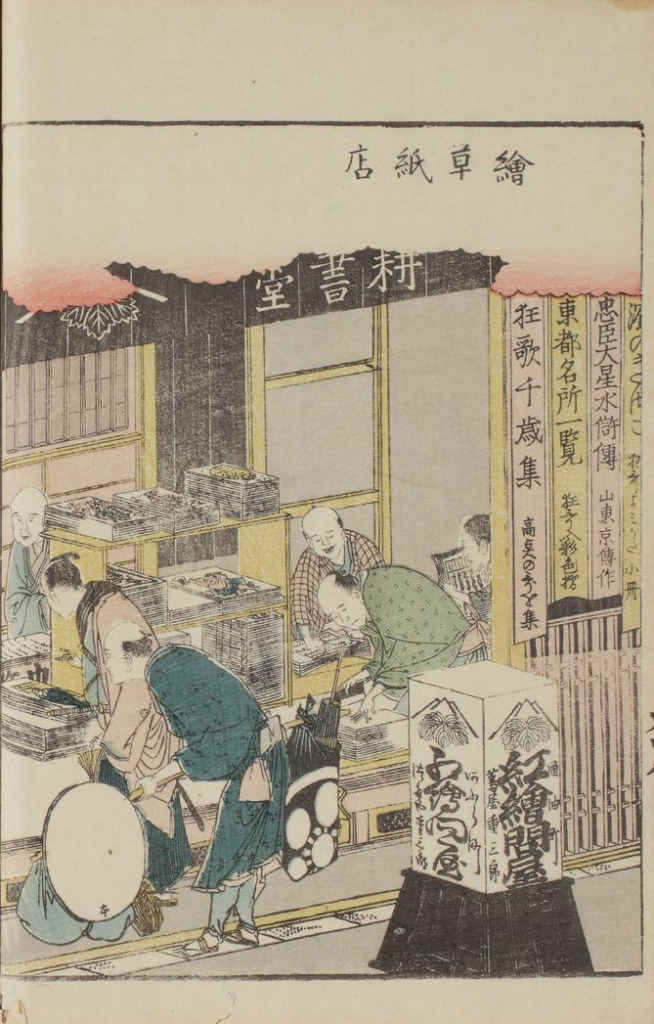
Mele of Bicycling Participation Report

In 1856, the young French printmaker Bracquemond was shown a collection of ceramics by an acquaintance. These ceramics, imported from Japan, a country then closed to foreign relations, would likely have been rare in Western Europe. However, what captured his attention was not the ceramics themselves but their wrapping paper. It was a page from Katsushika Hokusai’s “Hokusai Manga.(Hokusai Sketch)” Impressed by the artwork, Bracquemond went on to obtain a copy of “Hokusai Manga” through great effort and introduced it to his painter friends in Paris, eventually leading to Hokusai becoming widely known across Europe from France.
…Unfortunately, the story is said to be fictional, but it is widely known that Hokusai had a strong impact on European artists of the time, especially young Impressionists such as Claude Monet and Vincent van Gogh.

Hokusai’s artworks, including “The Great Wave off Kanagawa” from the series “Thirty-Six Views of Mount Fuji,” known overseas as “The Great Wave,” are familiar to everyone. Sixteen to twenty-four pieces from the series are featured in Japan’s current passport, marking the first time art and design have been incorporated. “The Great Wave off Kanagawa” also became the design for the new 1000-yen banknote starting in the fall of 2024, solidifying Hokusai’s status as a representative painter of Japan.
Above all, in this column “TOKYO OLD TOWN Bicycle Stroll,” he is revered as a senior figure among the locals of old Edo, having spent his life as a town artist and loving his hometown dearly.
Today, I’d like to take a bicycle ride through Sumida Ward, where Hokusai was born and lived, tracing the footsteps of this esteemed hometown artist.
1. Soon to become Katsushika Hokusai, born in a riverside town (Age 1~)
2. Teenager (Ages 10~)
Approximately 100 years after the completion of Ryogoku Bridge, which connected Edo and Shimousa Province, the once rural district of Honjo (now Sumida Ward), newly transformed into Edo, bustled with relocated samurai and townspeople from Nihonbashi.
In 1760, near the Honjo Warigesui Canal, the future Hokusai, born Kawamura Tokitarou (later known as Tetsuzo), came into the world.
※Note: Ages are recorded in traditional Japanese counting, where a person is considered 1 year old upon birth.
Today, the Honjo Warigesui Canal has been filled in and transformed into “Hokusai Street.” Despite being called a sewage system, at the time, toilets were mostly pit-style, and household wastewater hardly flowed in, so the water quality in the sewage was comparable to that of a pond. Hokusai, known for his mastery of water depiction in famous works like “The Great Wave off Kanagawa,” might have been influenced by living in an area blessed with water resources.

Midorimachi Park, where a monument commemorating Hokusai’s birth stands. Adjacent to it is the Sumida Hokusai Museum, established in 2016. The museum provides explanations of Hokusai’s works in multiple languages, including English, Chinese, French, etc. During my visit, it seemed that about 30% of the visitors were from overseas, which demonstrates Hokusai’s popularity abroad.

And so, at the age of six, Hokusai began to draw.
At the Rental Bookstore
At the age of 11. Back then, books were borrowed rather than bought. Hokusai began working at a rental bookstore.

“The erudite and versatile rental bookstore on titles”
Meaning: Even though they hadn’t read the content, they were knowledgeable about book titles.
Despite later reading such a Senryu (A form of haiku), Hokusai’s exposure to numerous illustrations and texts seemed to have fueled his later artistic career. According to one account, he was so engrossed in the illustrations that he neglected his work and ended up getting fired…
Becoming a Woodblock Carver
At the age of 14, after being fired (?) from the rental bookstore, he worked as a woodblock carver.
During that time, within the genre of ukiyo-e, there were two types of prints: nishiki-e, which were multi-colored woodblock prints capable of mass production, and nikuhitsu-e, which were single-point hand-painted works. Woodblock prints were produced through the division of labor among the artist who drew the monochrome (sumi) outline, the carver who carved the outline onto woodblocks and added colors, and the printer who printed them. His experience during this period proved useful later when directing woodblock carvers.
Then, at the age of 19, Hokusai knocked on the door of the popular artist Katsukawa Shunsho and began his long career as a ukiyo-e artist.
*Part 2 will be released soon. The bicycle stroll will appear in the next installment and beyond. Stay tuned for more excitement!
🚲Today’s Course (Part 1 to Part 3 included)
Reference Site:
Sumida Hokusai Museum : https://hokusai-museum.jp/?lang=en
🚴♂️Hokusai bicycle stroll🚴♂️
#01 Birth to Teens
#02 20s to 40s
#03 50s and Beyond
Profile
Shitamachi Kombu
Weekend writer. Born in Kanda, Tokyo, and the third generation “Edokko” (Tokyoite). Interested in rediscovering the shitamachi (oldtown) area. Relies on an electric bicycle daily as a commuting companion. Suffers from a poor sense of direction. A fan of essayist Sadao Shouji. Writing under the pen name “Shitamachi Kombu,” inspired by the classic snack “Miyako (downtown) Kombu.”
Post Date:2024.05.16